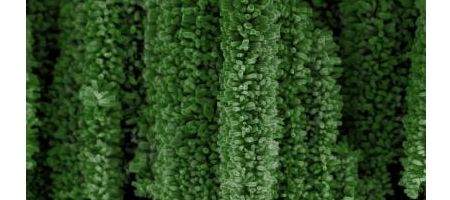University of California, San Diego electrical engineers are building a forest of tiny nanowire trees in order to capture solar energy and harvest it for hydrogen fuel generation.

They say their nanoforest – made from abundant materials such as silicon and zinc oxide – offers a cheap way to deliver hydrogen fuel on a mass scale.
“This is a clean way to generate clean fuel,” says professor Deli Wang.
Wang’s ‘3D branched nanowire array’ uses photoelectrochemical water-splitting to produce hydrogen gas. And, because the vertical nanotree structure harvests more sunlight than flat versions, it produces more hydrogen fuel, more efficiently.
The vertical branch structure also maximizes hydrogen gas output, says PhD student Ke Sun, as very small gas bubbles of hydrogen can be extracted much faster.
“Moreover, with this structure, we have enhanced, by at least 400,000 times, the surface area for chemical reactions,” says Sun.
In the long run, the team’s aiming for that holy grail of energy production: artificial photosynthesis. In photosynthesis, as plants absorb sunlight they also collect carbon dioxide and water from the atmosphere to create carbohydrates to fuel their own growth.
Wang’s team hopes to mimic this process to also capture CO2 from the atmosphere – reducing carbon emissions – and convert it into hydrocarbon fuel.
“We are trying to mimic what the plant does to convert sunlight to energy,” says Sun. “We are hoping in the near future our ‘nanotree’ structure can eventually be part of an efficient device that functions like a real tree for photosynthesis.”






